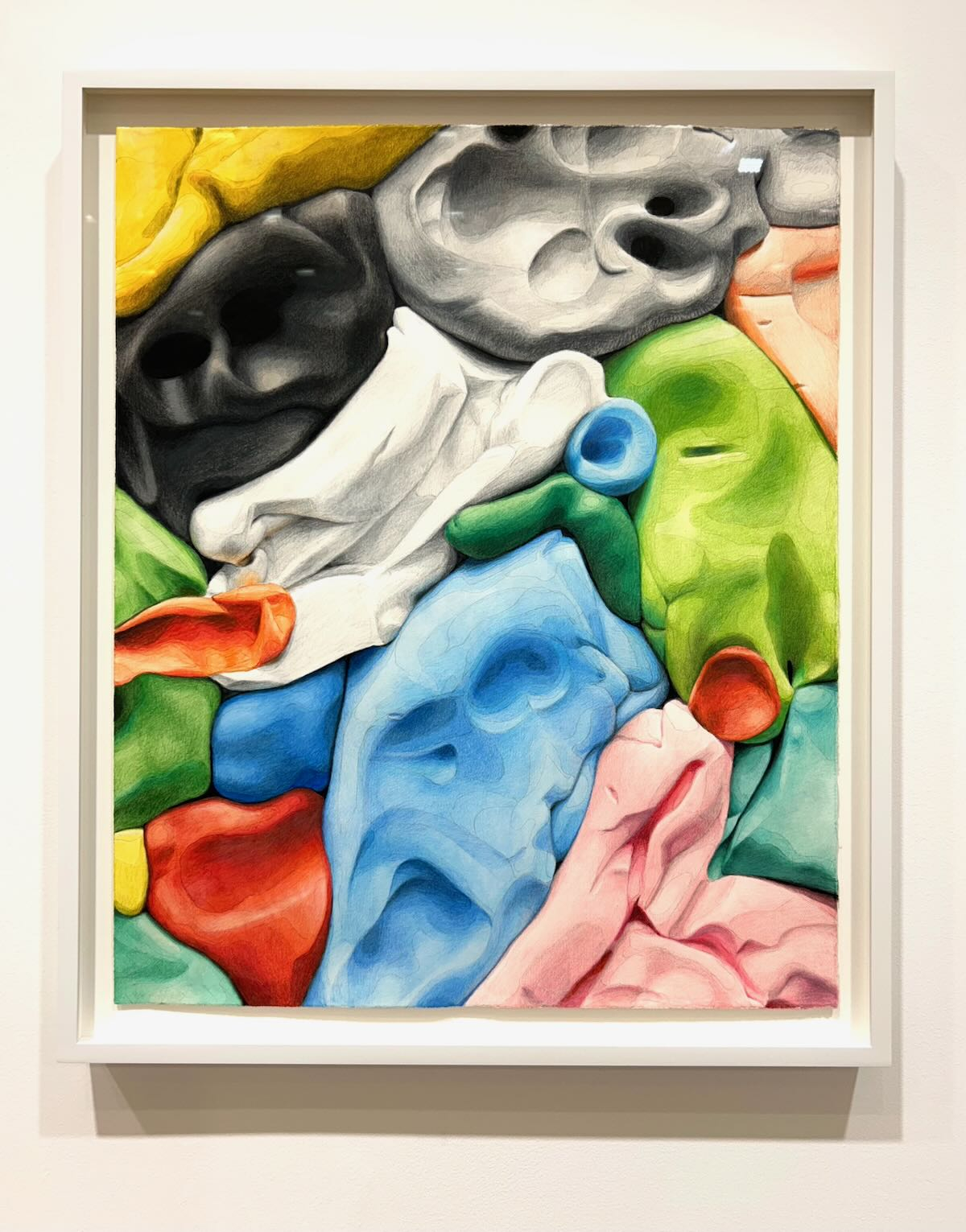
Through Feb. 3rd
What happens to us when we look at paintings? How does it change us? I don't mean the self-transforming state when the "real" is revealed behind the ideology but the adaption that you, the viewer, make on encountering an artwork, how we put ourselves into the mind and body of the artist. To look back for a minute at our creation.
Light is a factor in Alex Ross' beautiful new drawings at Miles McEnery. It's neutral and hard and comes from above. Close and to the immediate left of the image, like a watch mender's light. This differs from the traditional source angled from right to left, as in a Piero Della Francesca, high in the sky like an early Summer, late morning sun. This light is so close that you feel as if your head should cast a shadow on the paper. But it doesn't, and you feel subtly negated.
You expand in size, too. Ross has enlarged the object, and you swell to accommodate that.
Scale fluctuates poetically in his work. The post-painterly abstractors of the 90s were very keen to reinforce the principle that the scale of the work must be in some way relative to the body. In our post-computer, post-iPhone reality, we can't focus on this shibboleth because we are constantly zooming in and out to see who was in the background at a party. In Ross's work, not much thought is given to the image being larger or smaller than the original model.
His subject is an arrangement of thick Sculpey blobs abutting each other.
In "Modeling the Physical" 2023 (color pencil, graphite, crayon), a folding white shape makes way for the end of a deep sea tube. The look of underwater rock formations is undercut by an obvious fingernail groove. His favorite green reappears like the underside of a paw.
He's riffing on impasto painting, too, like Auerbach rendered by Glenn Brown. But here, the thick palette knife marks that try to represent something are replaced by a much slower image of highly considered shapes that are placed and manipulated theatrically.
The invocation of organic life at different scales seems to be used to remind us that the energies that govern and create life are equivalent. The river that smoothes the rocks, the way that cells arrange themselves on the edge of a leaf. Everything is animated by forces, a force?
It's why he uses Sculpey and sometimes plasticine. When we were young, we were closer to this energy; we responded to it without question. Our first creations in Play-Doh made us little Gods.
It feels good to 'be' the drawing, but we need something to hold on to. This is why I prefer Ross' drawings to his paintings. In the paintings, not much is made of the stroke, but his rendering ability in colored pencil is exhilarating! He can articulate light kicking back into a shadow from a brighter object. His hand creates a warm glow, waking up a landscape. And the pencil stroke scale is the real scale, the artist's hand.
It's orientating; we're back. Back in the body, riding the thumb, over the hills and into the valley below.
Art review review
Well, that certainly was one way to look at it! I like the 'underside of a paw' reference. Footprints, faces, sweets and unemployed, or retired balloons, or a clown's washing basket. I loved the review.

Beautifully writen monsieur!